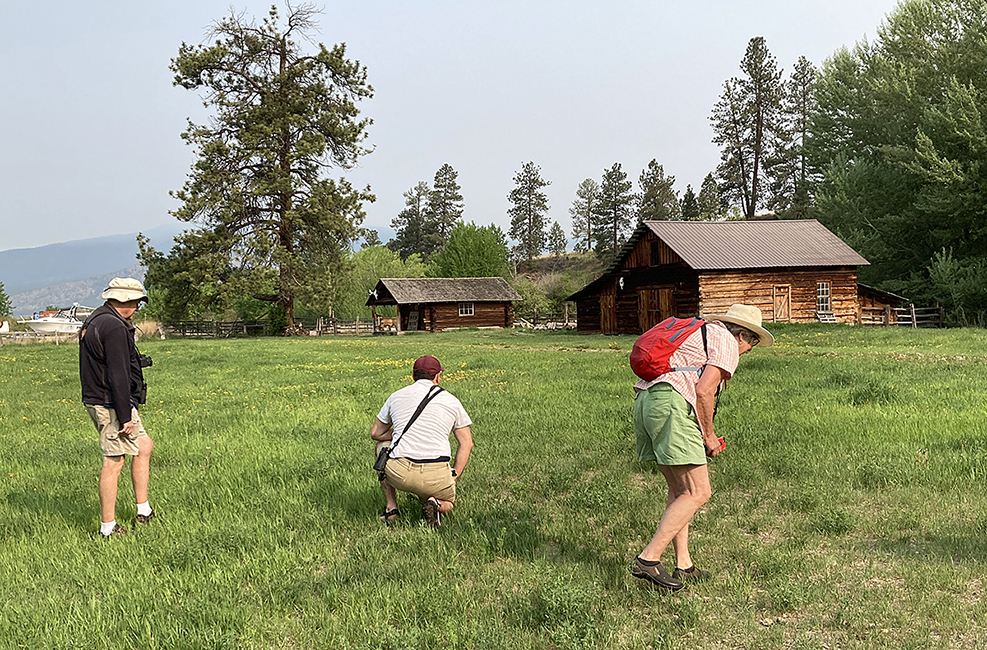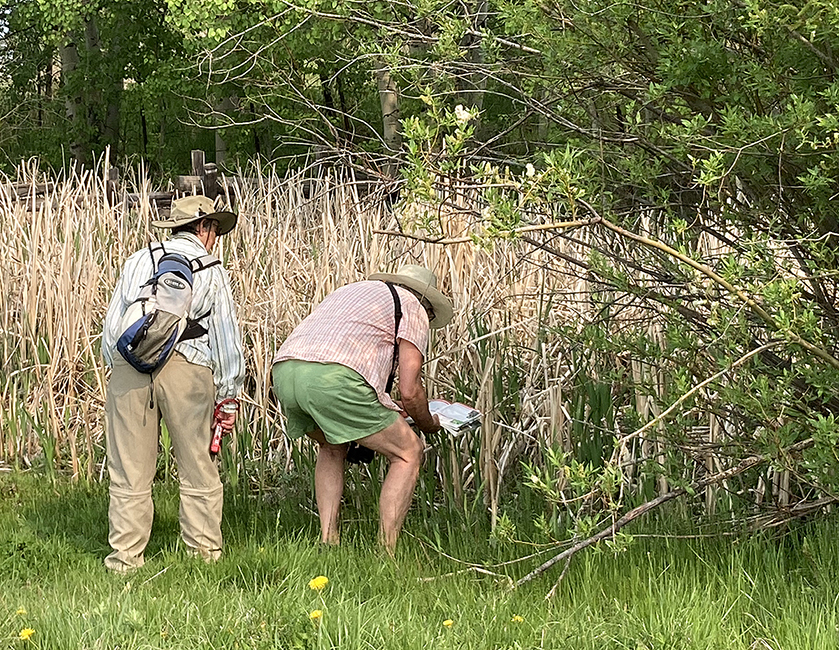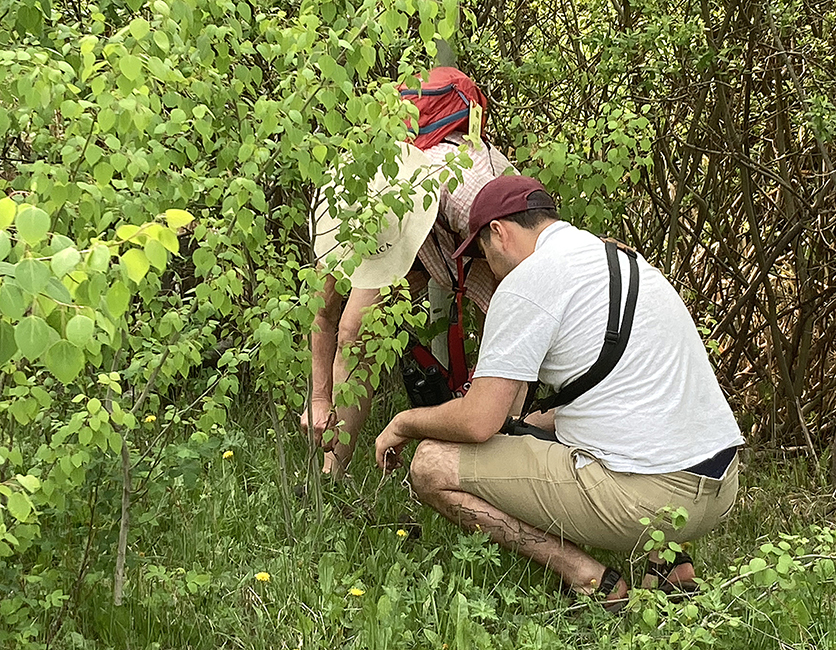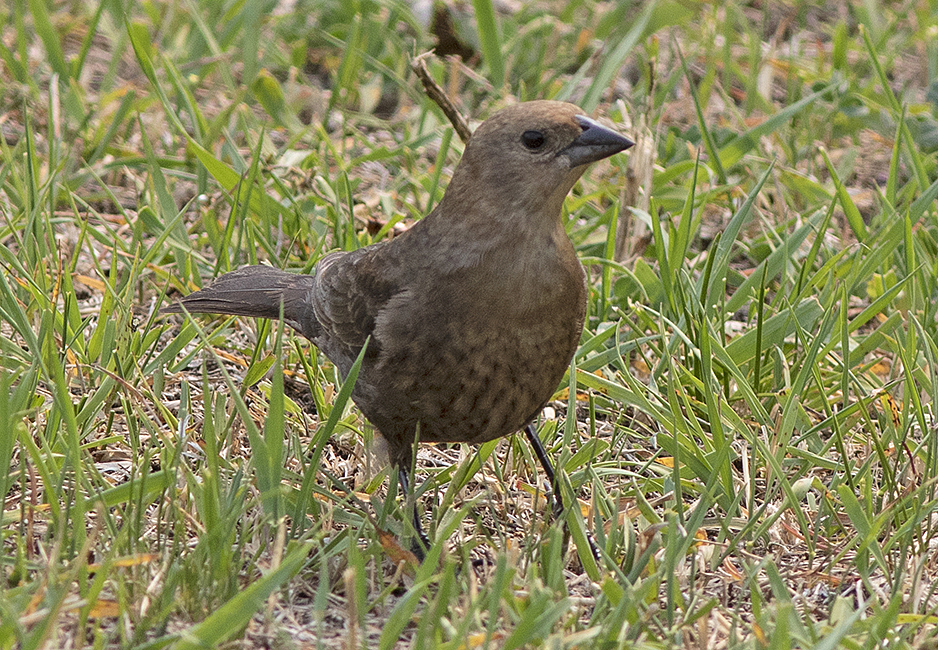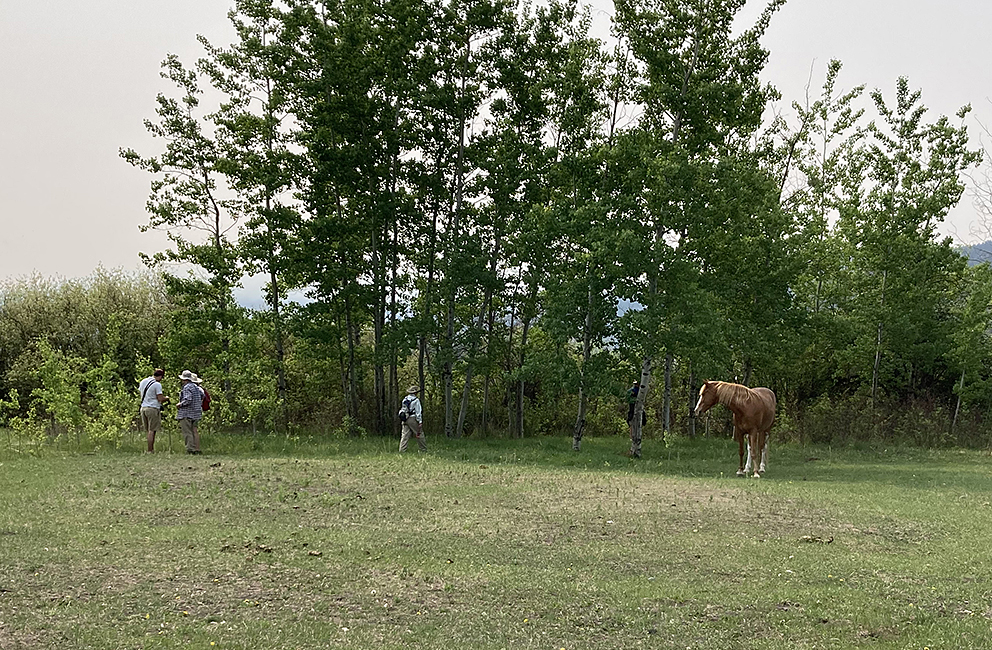The Nicola Naturalist Society ran our first bioblitz at a property in Coutlee, just outside Merritt, on 17 May 2023. The owner is planning to re-wild much of this property which is currently mainly horse-pasture. So this bioblitz (and others planned there for later this year) will set the baseline to see how things change over time as trees are planted and local nature is allowed to move in. Liam Ragan, BC Nature’s resident expert on bioblitzing and iNaturalist was on hand to help us novices to experience our first mini-bioblitz.
The event was held as two sessions – six people participated in a morning session 8AM-12 noon and four in the evening session 5-8 PM. In total the team made 174 iNaturalist observations with 117 species. These included birds, a snake, numerous insects, spiders, plants, lichens and mushrooms. The iNaturalist project page is here: Coutlee Bioblitz 17MAY2023
A few birds were included in the iNaturalist records, but two lists of birds were kept on eBird and those are available here: Coutlee Bioblitz Morning Birds and here: Coutlee Bioblitz Evening Birds
Below is a small example of some of the critters that were documented on the bioblitz day.
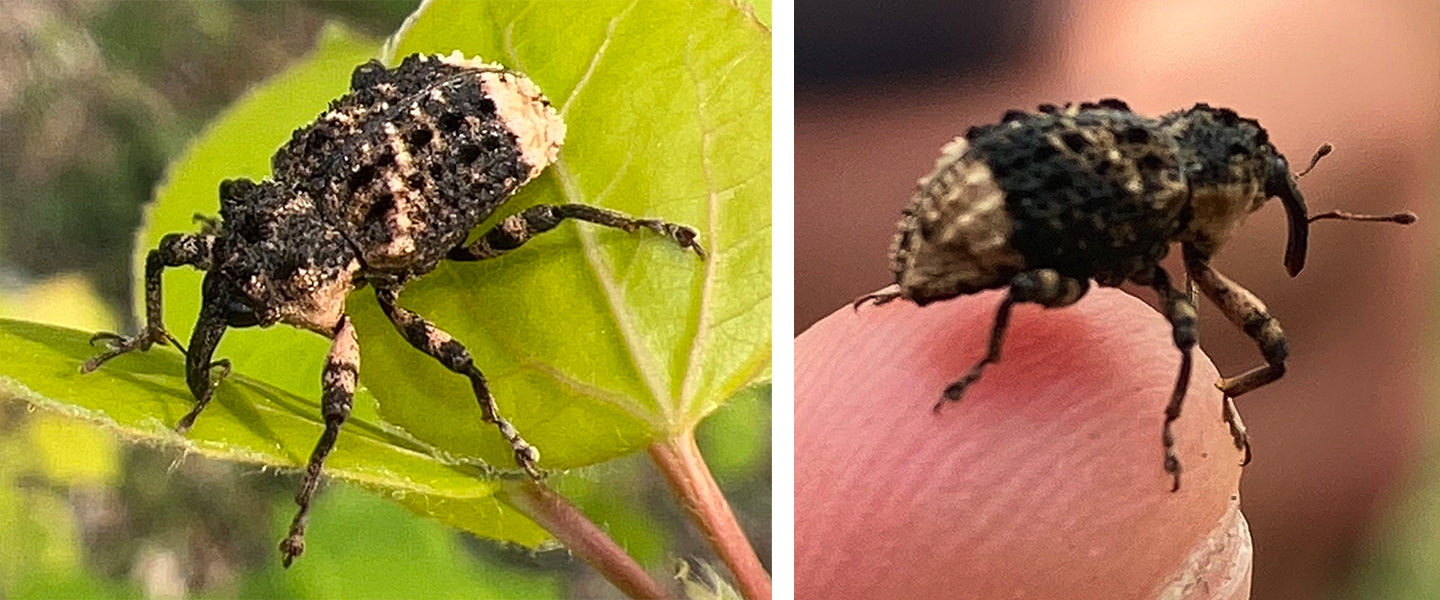
Poplar-and-Willow Borer (Cryptorhynchus lapathi) – we found several of these cute little weevils. Photos: © Liam Ragan (left), Alan Burger (right).
We found surprising diversity of insects in the horse manure …..
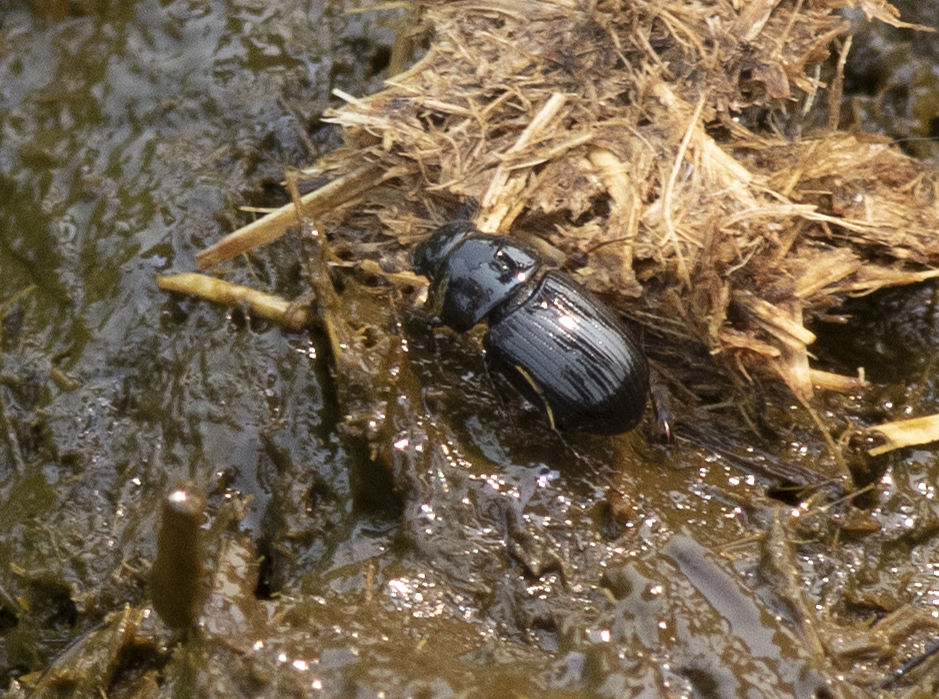
One of the numerous dung beetles found in the horse dung at the Coutlee bioblitz, tentatively identified as Phaeaphodius rectus a member of Small Dung Beetles (Subfamily Aphodiinae). Photo: © Alan Burger
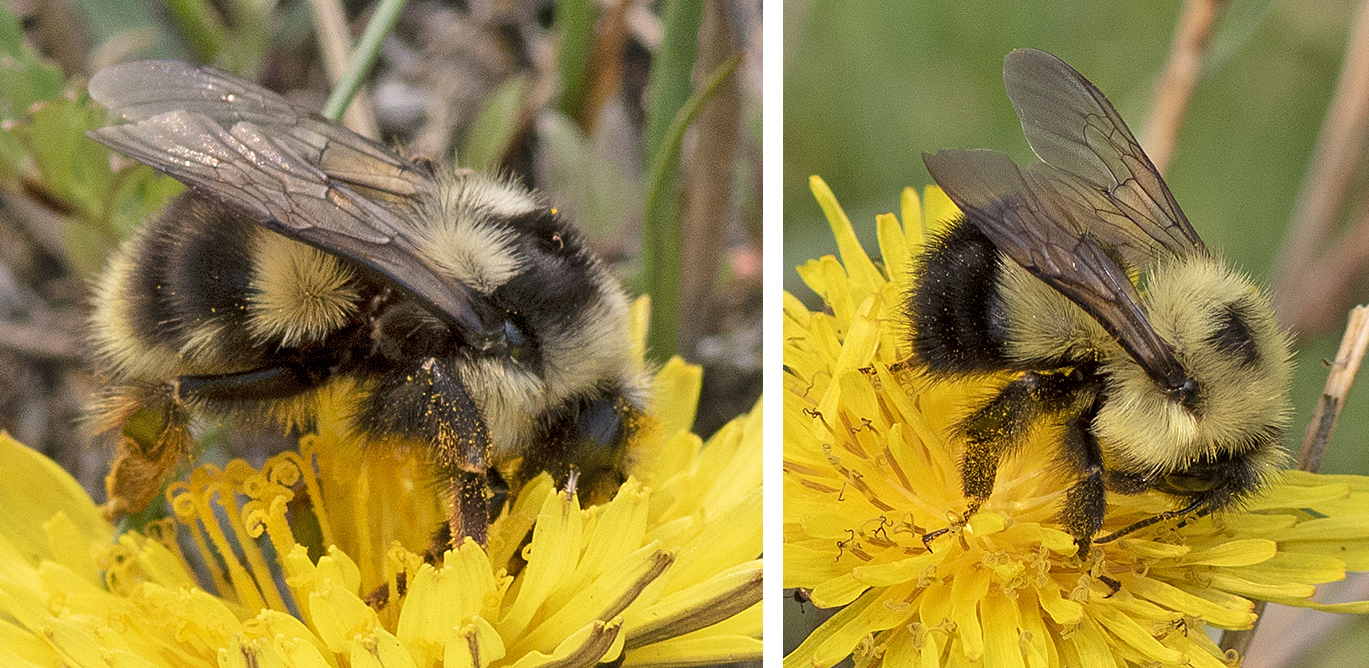
Two species of bumblebee nectaring on the dandelion flowers: Nearctic Bumble Bee (Bombus vancouverensis ssp. nearcticus) on the left and Half-black Bumble Bee (Bombus vagans) on the right. Photos: © Alan Burger
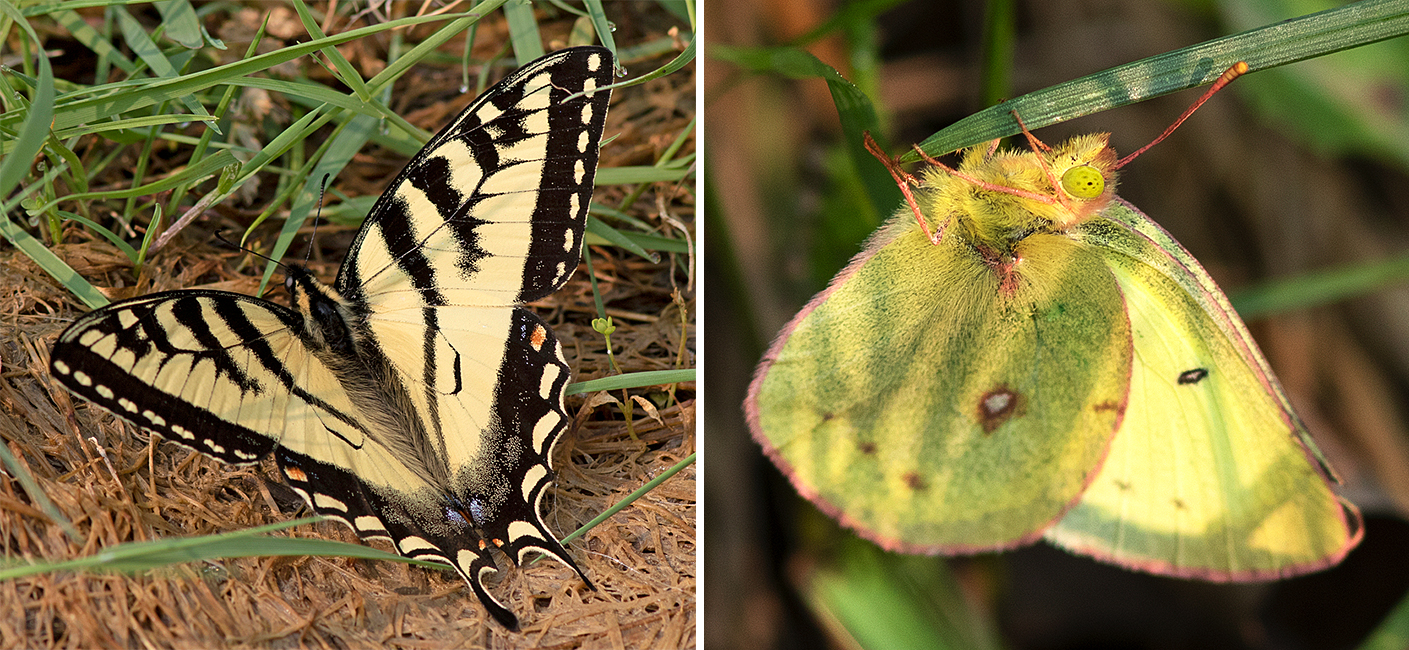
Butterflies too were fairly common: Canadian Tiger Swallowtail (Papilio canadensis) on the left and Clouded Sulphur (Colias philodice) on the right. Photos: © Alan Burger
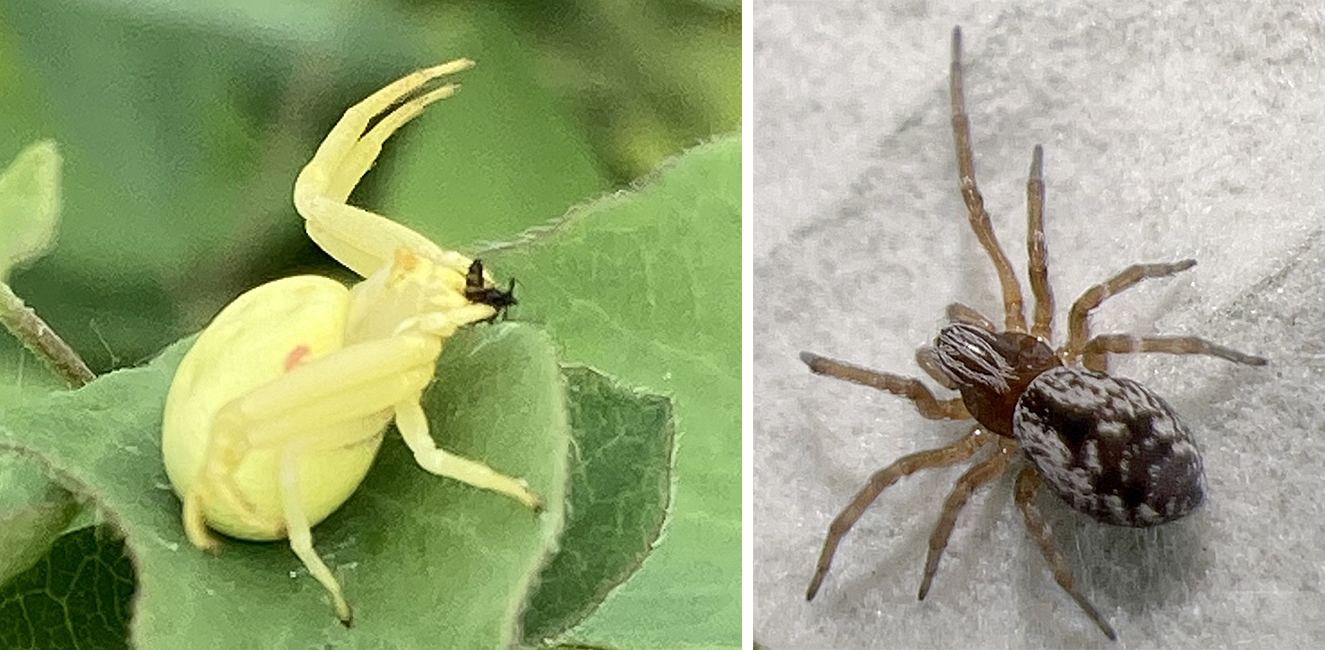
Two of the many spiders encountered on 17 May: Goldenrod Crab Spider (Misumena vatia) on the left and a meshweaver spider (Family Dictynidae – species not yet identified) on the right. Photos: © Alan Burger (left), © Liam Ragan (right).
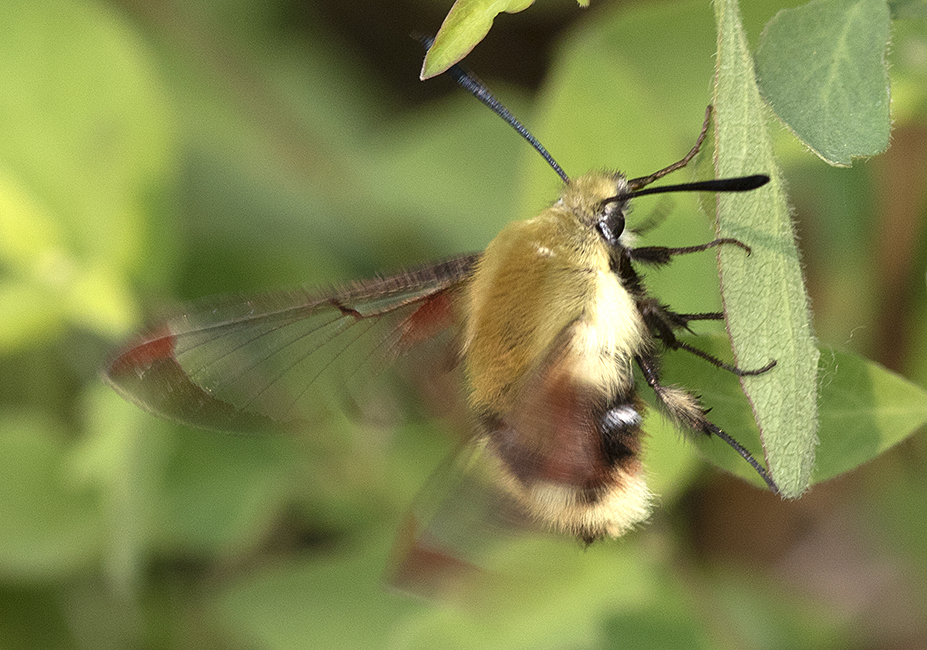
This big moth created some excitement – most of us had never seen this species before – Rocky Mountain Clearwing (Hemaris thetis). Photo: © Alan Burger
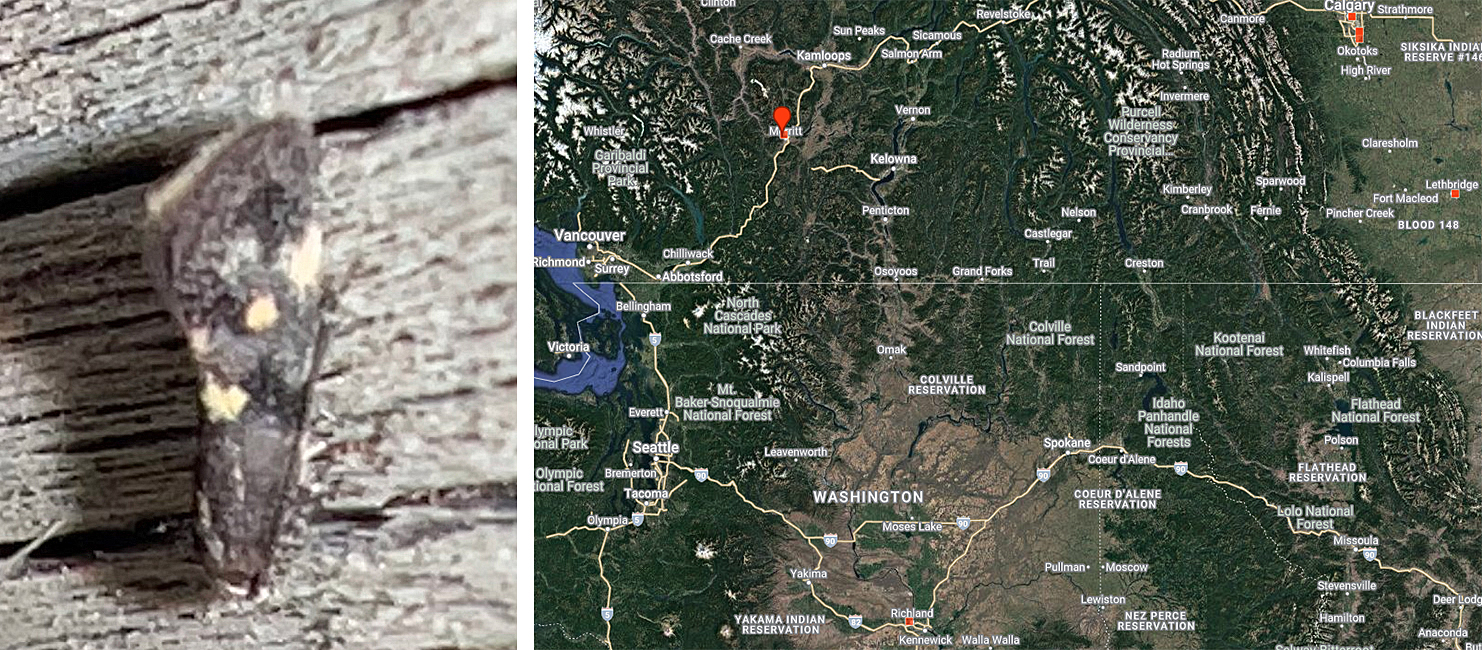
It is rather dull in appearance but this tiny moth created quite a stir among the moth experts on iNaturalist – tentatively identified as Orache Leafminer Moth (Chrysoesthia sexguttella). As you can see on the map, this is the first record of this species in BC with very few recorded in neighbouring provinces or states. It was possibly brought into our region by some human activity. Photo: © Liam Ragan
We did document some vertebrates too ……
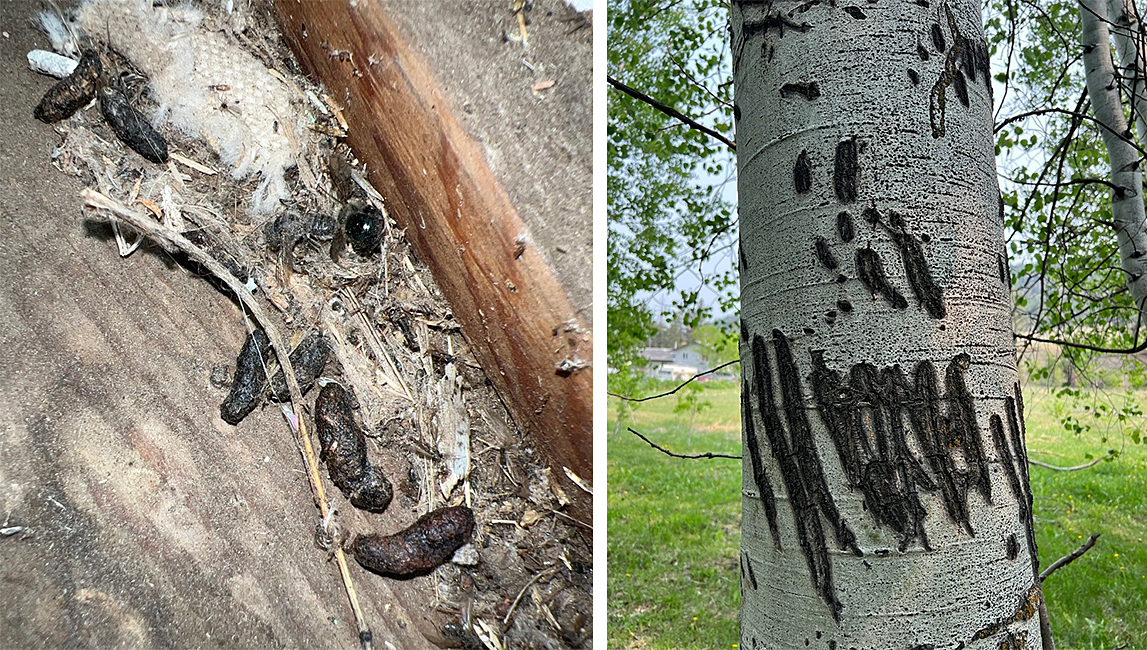
Evidence of old occurrences of mammals – droppings from Bushy-tailed Woodrat (Neotoma cinerea) and claw marks made by a Black Bear (Ursus americanus). Photos: © Liam Ragan.
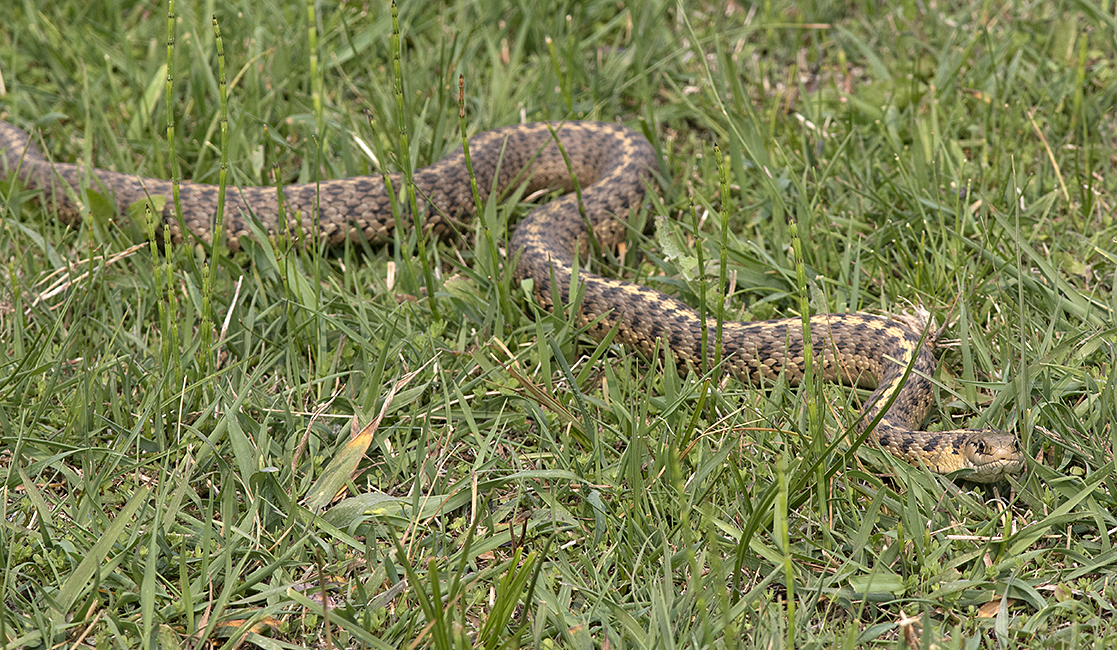
Our only reptile – a large Western Terrestrial Garter Snake (Thamnophis elegans). Photo: © Alan Burger
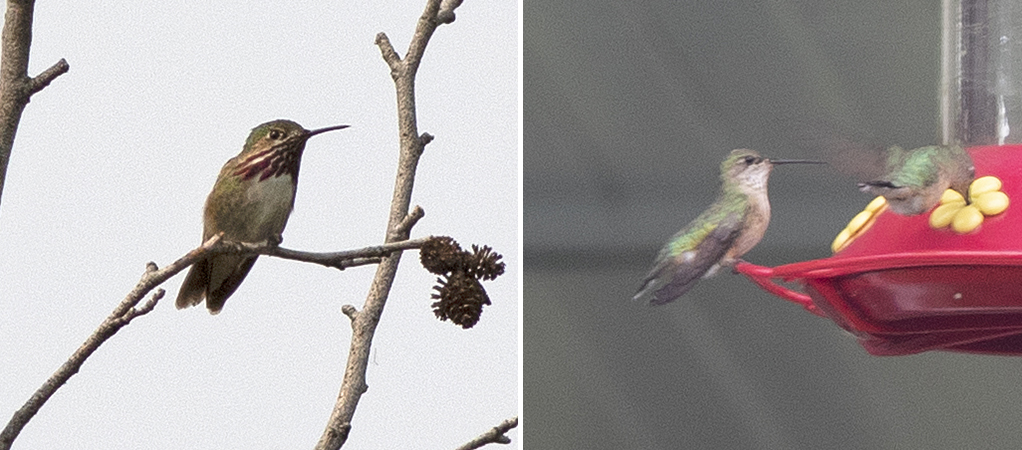
Two of the three species of hummingbirds that were encountered on the bioblitz: a male Calliope Hummingbird (left) and female Black-chinned Hummingbird (right). Photos: © Alan Burger
And other life forms ……
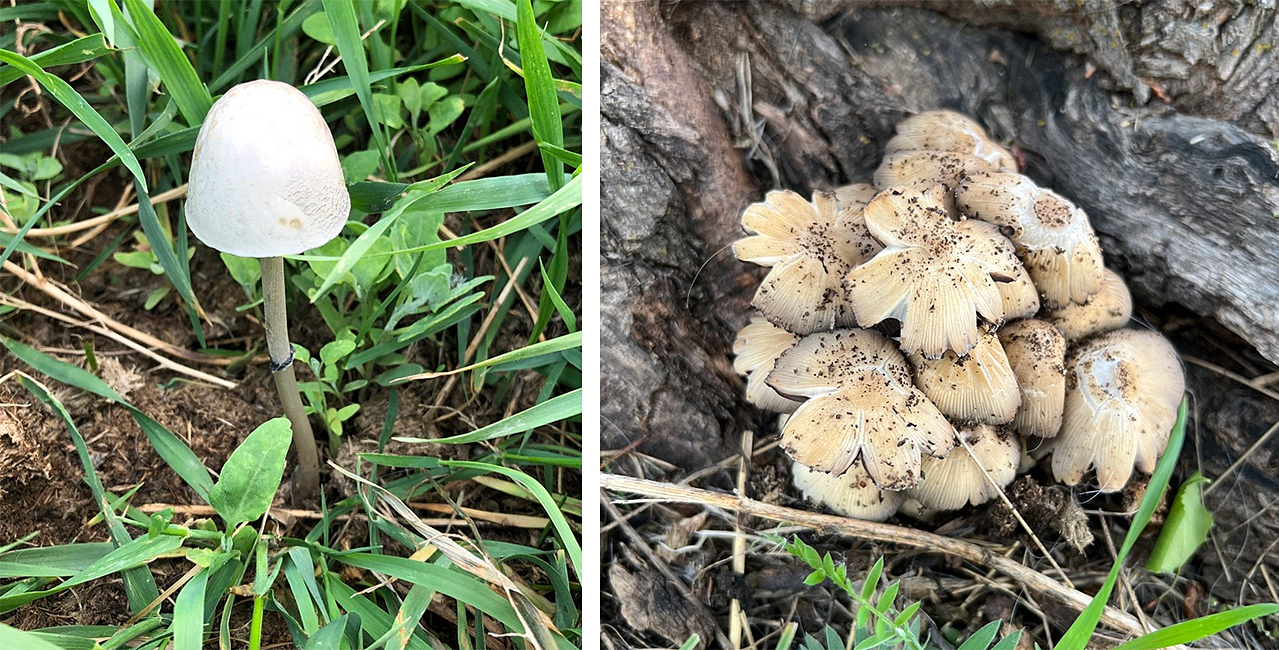
A couple of mushrooms, still requiring species confirmation. On the left a mottlegill mushroom (Genus Panaeolus) and on the right a Common Gilled Mushroom (Family Psathyrellaceae). Photos: © Susan Graham (left), © Liam Ragan (right).
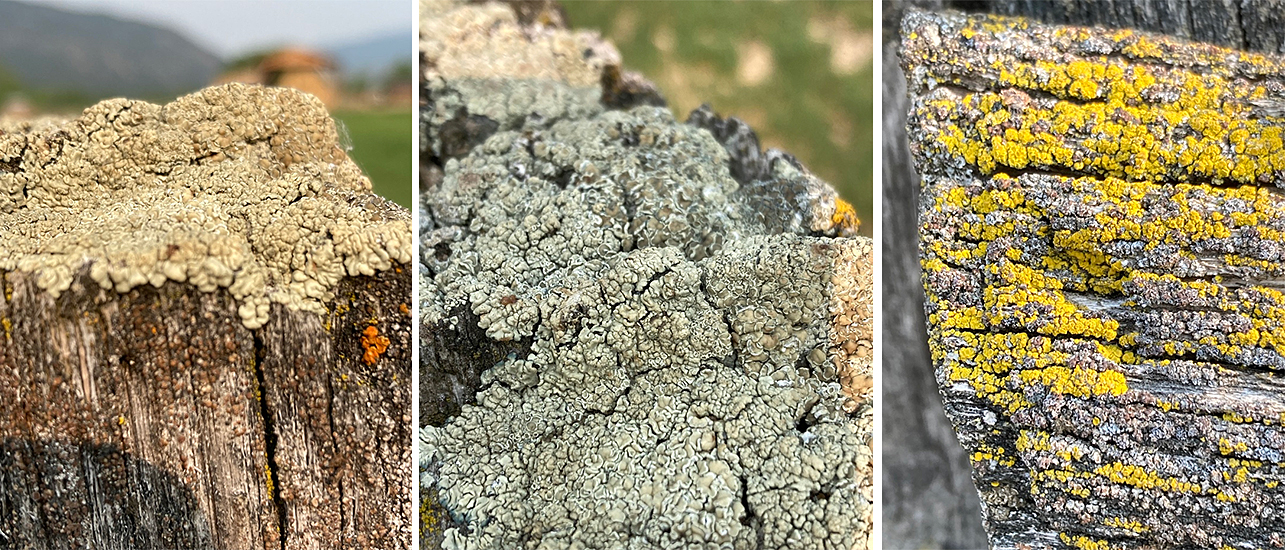
Lichens are notoriously difficult to identify from photos, but these lichens growing on fenceposts and old log buildings were tentatively identified as (left to right): Orange Rock Posy (Rhizoplaca chrysoleuca), Green Rock-Posy (Rhizoplaca melanophthalma) and Gold Dust Lichen (Chrysothrix candelaris). Photos: © Alan Burger
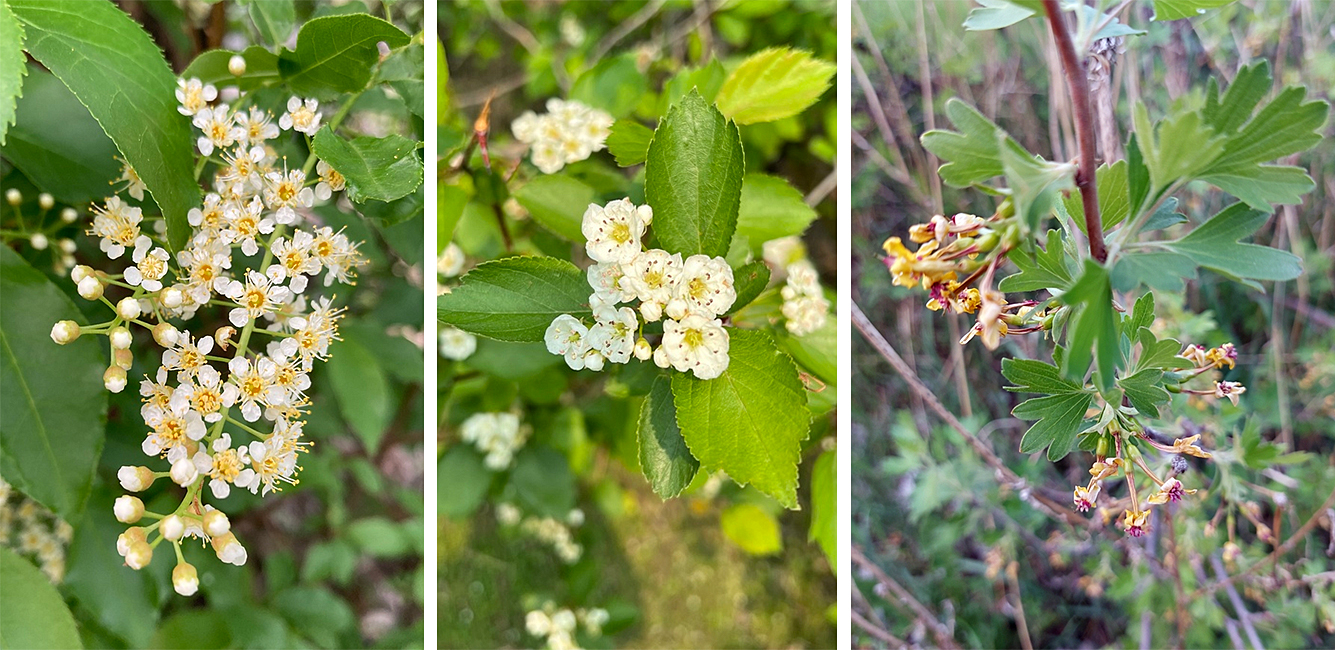
Trees and shrubs were flowering (left to right): Choke Cherry (Prunus virginiana), Black Hawthorn (Crataegus douglasi) and Golden Currant (Ribes aureum). Photos: © Alan Burger, © Liam Ragan and © Martin Ince.
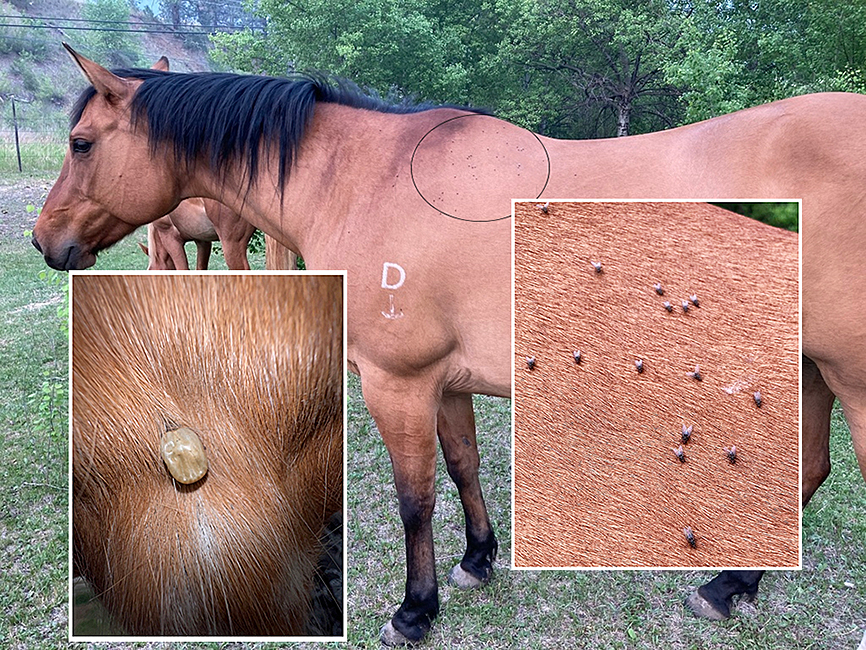
And the horses themselves provided added biodiversity – a Dog Tick (genus Dermacentor) and muscoid flies (Superfamily Muscoidea). Photos: © Liam Ragan and Alan Burger
~~~~~~~~~~~~~~~~~~~~~~~~~~~~~~~~~~~~~~~

